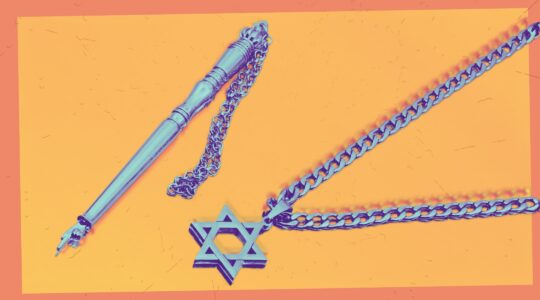With all the hoopla this month surrounding the 100th anniversary of the Balfour Declaration — most of which is richly deserved — there is something missing.
We know that the notion of a “national home” — a central locution of the Declaration — was embraced, with greater or lesser enthusiasm by Jews around the world. But what about the Arabs, especially those at the time in Palestine? What was their take on Balfour?
First, we need to recall that in 1917 there was no Palestinian Arab nationalism — at least not the kind we would recognize a century later.
In the early years of the 20th century, Arabs in Palestine — Ottoman Palestine — participated in a broader Arab culture that was neither Ottoman nor particularly Muslim. It was largely Christian, and this broad Arab culture of the “Syrian” provinces (including Palestine, historic Eretz Yisrael) represented the beginning of an Arab national identity. Arabs in that part of the world had a shared language (Hashemi Arabic), a shared culture, a shared geography.
The geography is important. The Arabs of Palestine had no desire to be “Palestinians”; they saw themselves as a part of a larger Arab world. They counted themselves as part of what was known as “Greater Syria” — present-day Syria, Lebanon and Jordan, with Palestine being “South Syria.” Culturally, they were less of the desert than of the North African Maghreb. The leaders were cosmopolitan and cultured, and were ethnically — and politically — part of a Greater Syria.
So what happened? Any aspirations for a Greater Syria Arab state were crushed in the late teens to the early 1920s by the French, who had hegemonic aspirations in the north. Palestinian Arabs were now on their own. They were now — like it or not — “Palestinians.” Originally viewing themselves as Arab South Syrian nationalists, they were now Palestinian nationalists. And their new identity was developed as an “against” identity: against and in response to two new dynamics: the failure of a broader (that is, Greater Syrian) nationalism; and the new challenge of Zionism.
It is against this historical backdrop that we look at the Arab view of the Balfour Declaration.
The key phrases in the Declaration were, as is well known, “the establishment in Palestine of a national home for the Jewish people”; and, “nothing shall be done which may prejudice the civil and religious rights of existing non-Jewish communities in Palestine.”
Sounds OK. So what was wrong with this picture to the Arabs?
First, in terms of the “national home” clause, as a practical matter, Britain was not in control of that part of the world. On what basis were the British issuing a declaration on a “national home” in Palestine?
But this was not the issue for the Arabs of Palestine. Putting aside for the moment that there was in 1917 no Palestinian political nationalism to speak of, the disparity in the two clauses gave pause to many in the Arab world. A “national home for the Jewish people” was language that suggested some kind of state, and we recall that the “state” was the most valued currency of late-19th-century Europe.
The primary issue for the Arabs of Palestine was the tension between the “national home” and the “civil and religious rights” clauses. As noted by analyst Hussein Ibish, the operative clause— “the civil and religious rights of non-Jewish communities in Palestine” — was in the eyes of Arabs a vehicle to transform 93 percent of the inhabitants of Palestine into “non-Jewish communities.” To the Arab population, the Jews — all of 7 percent of the population — were to have a “national home,” perhaps a state. In contrast, the “non-Jewish” populations — the 93 percent — were to have nothing; they were to have only “civil and religious rights.” Civil and religious rights are individual rights — good to have, but they are not collective rights. Collective rights were reserved by the Declaration for the Jews in Palestine — the 7 percent.
The sum of the Arab calculus? They likely felt they were being deprived by foreigners of our earlier Greater Arab national aspirations; now the British (in cynical support of their war aims) seemed to be reducing them — 93 percent of Palestine — from a polity to individuals.
Those historians who maintain that the Arab-Jewish conflict began with the 1920 or 1929 riots are missing a crucial historical moment — the Balfour Declaration — the moment at the very beginning of a Palestinian Arab movement. If much of contemporary Jewish history flowed from Balfour, much of the conflict directly derived from Balfour as well. Policy-makers: take note.
Jerome Chanes, senior fellow at the Center for Jewish Studies at the CUNY Graduate Center, is the author of four books and numerous articles, reviews and book-chapters on Jewish history and public affairs.
The New York Jewish Week brings you the stories behind the headlines, keeping you connected to Jewish life in New York. Help sustain the reporting you trust by donating today.




